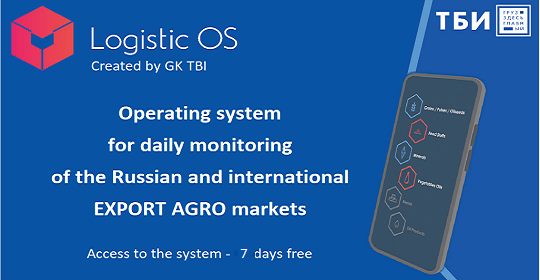In the first half of the year, the volume of grain exports from the Russian Federation sank heavily, but in December there is a chance even to set a record.
According to a number of experts, this month the volume of grain export from Russia may reach 4-4.8 million tons.
For example, Sovecon expects levels of 4-4.2 million. As director Andrey Sizov noted, 23 million tons were shipped in the first half of this season.
But for the entire season, exports can amount to 44 million tons. This is even more than last season: 38 million.
At the same time, in December, the volume of more than 4 million tons is not ruled out, and this is comparable to the record of 2017.
Rusagrotrans has even more positive forecasts: it expects exports in December at the level of 4.8 million tons. Moreover, in November, Russia has already exported such a volume, if we take into account the countries of the EAEU.
In general, we see that at the beginning of the year, grain exports sank heavily, as they were hindered by the difficulties that arose due to sanctions.
Among other things, these are difficulties with freight, insurance of ships and cargoes, and making payments.
But to date, Russia as a whole has solved all these problems, so that the pace of exports has almost been restored.
What can prevent you from making money on grain exports?
One of the factors is the weather. It is stormy in the Sea of Azov now, so many flights are being postponed.
And all this puts pressure on the domestic market, where a large amount of grain has already accumulated due to a record harvest.
In addition, the Russian Federation is still involved in the grain deal with Ukraine. This leads to the fact that we have to compete with its grain in the world market.
The worst thing is that at the moment world grain prices are basically going down.
And this threatens that Russian wheat, which was cheaper than another, will become uncompetitive.
At the same time, some deficit may soon appear on the world market, since France, for example, has already exhausted its export potential, and Ukrainian grain is exported slowly.
Therefore, taking this into account, the attractiveness of Russian wheat may remain high.
However, in the near future, Australia may enter the world market with its harvest, which carries a significant risk: with large volumes, the demand for grain, as well as prices, may fall, which is extremely unprofitable for the Russian Federation.
At the same time, there is now a trend towards the weakening of the ruble.
This alone can compensate for many difficulties for exporters, because it will actually allow them to receive more money from the sale of each ton of crops.
The depreciation of the ruble is usually associated with the growth of Russian imports and a slight weakening of exports.

